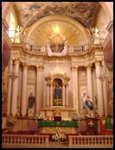|
Queretaro Architecture and Historical Sites
Queretaro, founded in 1531, is a colonial city located in central Mexico and is adorned with inspiring architecture typical of the 16th, 17th and 18th centuries. It is probably the most representative example of Spanish Colonial cities.
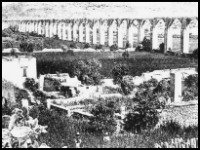
Acueducto (Aqueduct) – Located on Calzada de los Arcos. This monumental work is one of the city’s most representative architectural accomplishments. It is 1280 meters (4,224 feet) long, has 74 arches and was built 300 years ago.
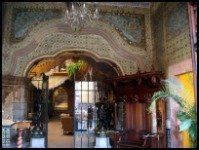
Casa de la Marquesa located at 41 Francisco I. Madero. This is one of the most beautiful examples of local baroque architecture. The two-story façade has hewn stone sculptures and various balconies. The interior is of magnificent Moorish-influenced architecture, as evidenced in the railings, arches, chapel and mosaics. Currently, the building operates as one of Queretaro's premier boutique hotels. Open daily from 9:00 AM to 5:00 PM.
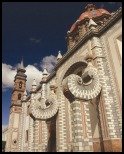
Beatario de Santa Rosa de Viterbo – Located on the corner of Av. General Arteaga and Ezequiel Montes. This temple is the epitome of eighteenth century baroque Queretaro, plus it contains within its walls more than 200 years of history and unique artwork. The facade and tower are of Arab influence, and could be considered "mannerism" as are the baroque altarpieces of slightly different styles. Another interesting feature of the architecture are its two beautifully painted flying buttresses of inverted arches which rest on the right side of the main entrance. It is theorized that they were placed there to protect the building from a possible collapse of the dome. Open daily from 9:00 AM to 6:00 PM.
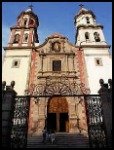
Templo de la Congregacion – Located on Av. 16 de Septiembre. This is the city’s second church built to honor the Virgin of Guadalupe. The cupola and the tiled towers have the colors of the Mexican flag, while the façade has a carved stone Virgin figure. Inside you’ll see an organ and the image of the Virgin of Guadalupe painted by Miguel Cabrera. Open daily from 8:00 AM to 7:00 PM.
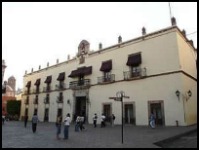
Palacio de Gobierno - Located on San Francisco Street, in the downtown area. This is a two-story palatial construction with a series of windows and balconies. This beautiful building was the headquarters of the Casas Reales, then it was a jail, and later it became the Casa de la Corregidora, the home of Doña Josefa Ortiz de Dominguez, who played a key role during Mexico’s independence movement. Open Monday through Friday from 9:00 AM to 9:00 PM and Saturday and Sunday from 10:00 AM to 2:00 PM.
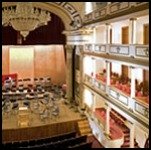
In 1922, the State Governor Jose Maria Truchuelo, issued a decree which modified the name of Great Iturbide Theatre to the Theatre of the Republic. As a performing arts center, it debuted with the comedy "Money Dance For Dog and Pan if it Dan." Later it hosted world renowned soprano Angela Peralta, known as "The Mexican Nightingale". Today it hosts and is the official site of the Philharmonic Orchestra of the State of Queretaro. Visiting Hours: Daily from 9:00 AM to 5:00 PM. Address: Juarez and Angela Peralta.

In 1886 a simple memorial was constructed of four wooden columns holding iron bars forming a ring of about 10 by 5 meters, the center had three columns of quarry with the names of those shot. Today, a small obelisk that marks the event remains. International relations resumed later, and Austria asked for permission to build a chapel, and construction began in 1900. In 1967, this area was designated as a National Park and an adjacent part of this land was donated to the Autonomous University of Queretaro. Between 1972 and 1973, The University Center was built on the South and West slopes. Throughout the next 30 years, new buildings of the UAQ, were constructed on the Northern slope. Today, there remains a small obelisk that marks the event. The park opens to the public Tuesday through Sunday from 6 AM to 6 PM.
Return from Queretaro Historical Sites to Queretaro Main page
|
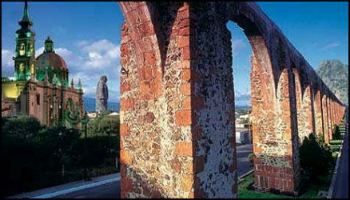
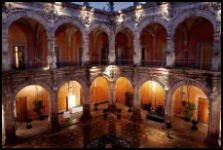
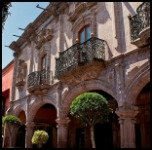
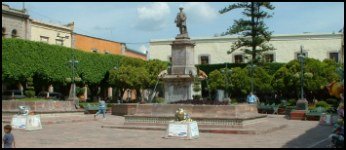 Plaza de Armas – Located on the corner of Andador 5 de Mayo and Pasteur. At the beginning of the 17th century this was a market. Today, it is a pleasant square with sidewalk cafes and the Marques de la Villa del Villar del Aguila statue.
Plaza de Armas – Located on the corner of Andador 5 de Mayo and Pasteur. At the beginning of the 17th century this was a market. Today, it is a pleasant square with sidewalk cafes and the Marques de la Villa del Villar del Aguila statue.
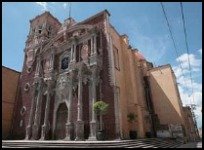 Oratorio de San Felipe Neri (Cathedral) – Located on the corner of Av. Francisco I. Madero and Melchor Ocampo. This church represents the transition from baroque architecture to neoclassic, as evidenced in the façade, which blends styles from the 17th and 18th centuries. Notable features are the columns and pink hewn stone ridges, as well as the use of volcanic rock on the façade. Open daily from 8:00 AM to 7:00 PM.
Oratorio de San Felipe Neri (Cathedral) – Located on the corner of Av. Francisco I. Madero and Melchor Ocampo. This church represents the transition from baroque architecture to neoclassic, as evidenced in the façade, which blends styles from the 17th and 18th centuries. Notable features are the columns and pink hewn stone ridges, as well as the use of volcanic rock on the façade. Open daily from 8:00 AM to 7:00 PM.
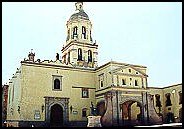 Templo y Ex Convento de la Santa Cruz – Located on the corner of Independencia and Manuel Acuña. This church has a neoclassic façade and a large porch that serves as a lobby. Inside you’ll see what were the old kitchen, the dining hall and a cellar. In the hallways you can see 17th and 18th century paintings. At the Ex-Convent’s famous orchard you’ll find a tree with thorns that grow in the form of a cross. Open daily from 8:00 AM to 7:00 PM.
Templo y Ex Convento de la Santa Cruz – Located on the corner of Independencia and Manuel Acuña. This church has a neoclassic façade and a large porch that serves as a lobby. Inside you’ll see what were the old kitchen, the dining hall and a cellar. In the hallways you can see 17th and 18th century paintings. At the Ex-Convent’s famous orchard you’ll find a tree with thorns that grow in the form of a cross. Open daily from 8:00 AM to 7:00 PM.
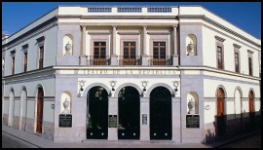 TEATRO DE REPUBLICA was inaugurated in 1852 under the name Teatro Iturbide. On September 16, 1854, the theater hosted the premiere of the Mexico National Anthem. Later, in 1867, the theater staged the court-martial that sentenced to death the Archduke Maximilian of Habsburg and imperial generals Miguel Miramon and Tomas Mejia. On November 27, 1916, the Constitutional Congress was organized to formulate, discuss and approve the Constitution of the United Mexican States. The constitution was formally adopted on February 5, 1917, to take effect from that date and is still in effect today.
TEATRO DE REPUBLICA was inaugurated in 1852 under the name Teatro Iturbide. On September 16, 1854, the theater hosted the premiere of the Mexico National Anthem. Later, in 1867, the theater staged the court-martial that sentenced to death the Archduke Maximilian of Habsburg and imperial generals Miguel Miramon and Tomas Mejia. On November 27, 1916, the Constitutional Congress was organized to formulate, discuss and approve the Constitution of the United Mexican States. The constitution was formally adopted on February 5, 1917, to take effect from that date and is still in effect today.
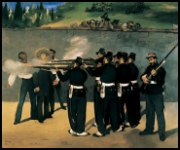 Cerro de las Campanas (The Bells Hill) is a hill located in the city of Queretaro. In 1867, Emperor Maximilian of Hapsburg and his generals Miguel Miramon, former president of Mexico, and Tomás Mejía surrendered to General Escobedo. They were tried for court-martial at the Theatre of the Republic, found guilty and sentenced to be shot. At dawn on June 19, 1867 they were taken to the Cerro de las Campanas in order to fulfill the sentence.
Cerro de las Campanas (The Bells Hill) is a hill located in the city of Queretaro. In 1867, Emperor Maximilian of Hapsburg and his generals Miguel Miramon, former president of Mexico, and Tomás Mejía surrendered to General Escobedo. They were tried for court-martial at the Theatre of the Republic, found guilty and sentenced to be shot. At dawn on June 19, 1867 they were taken to the Cerro de las Campanas in order to fulfill the sentence.
